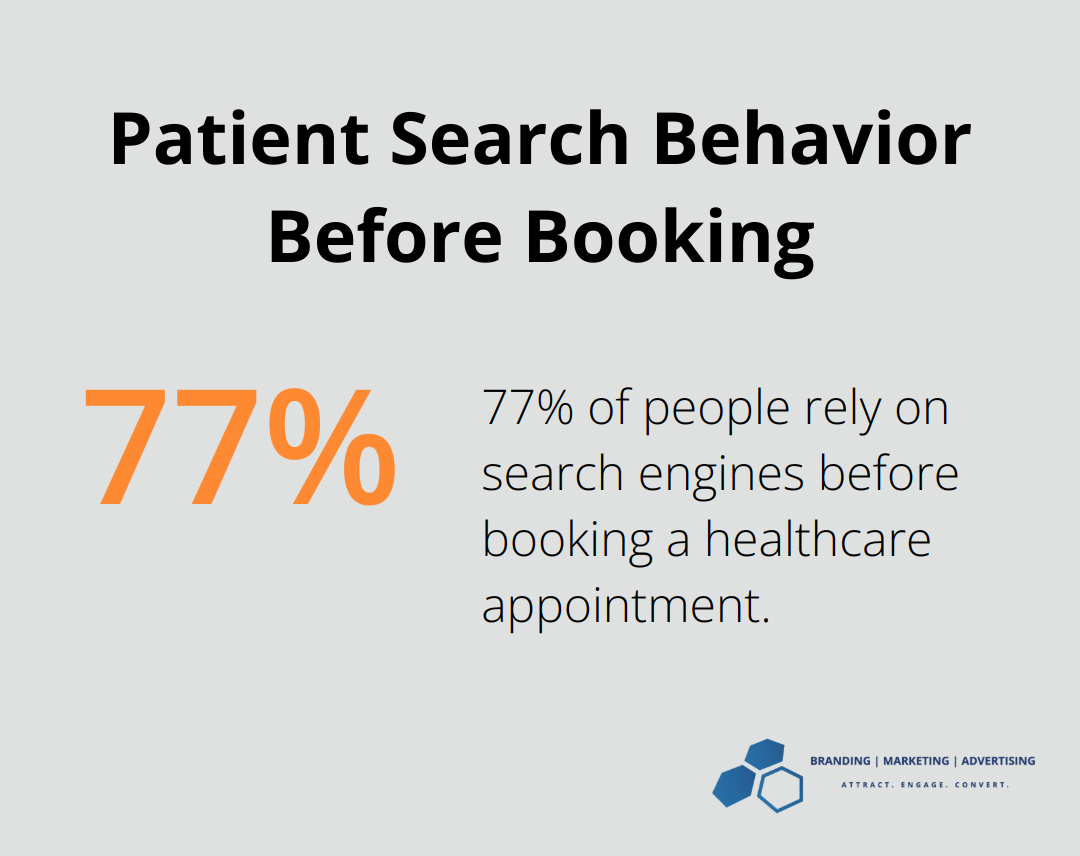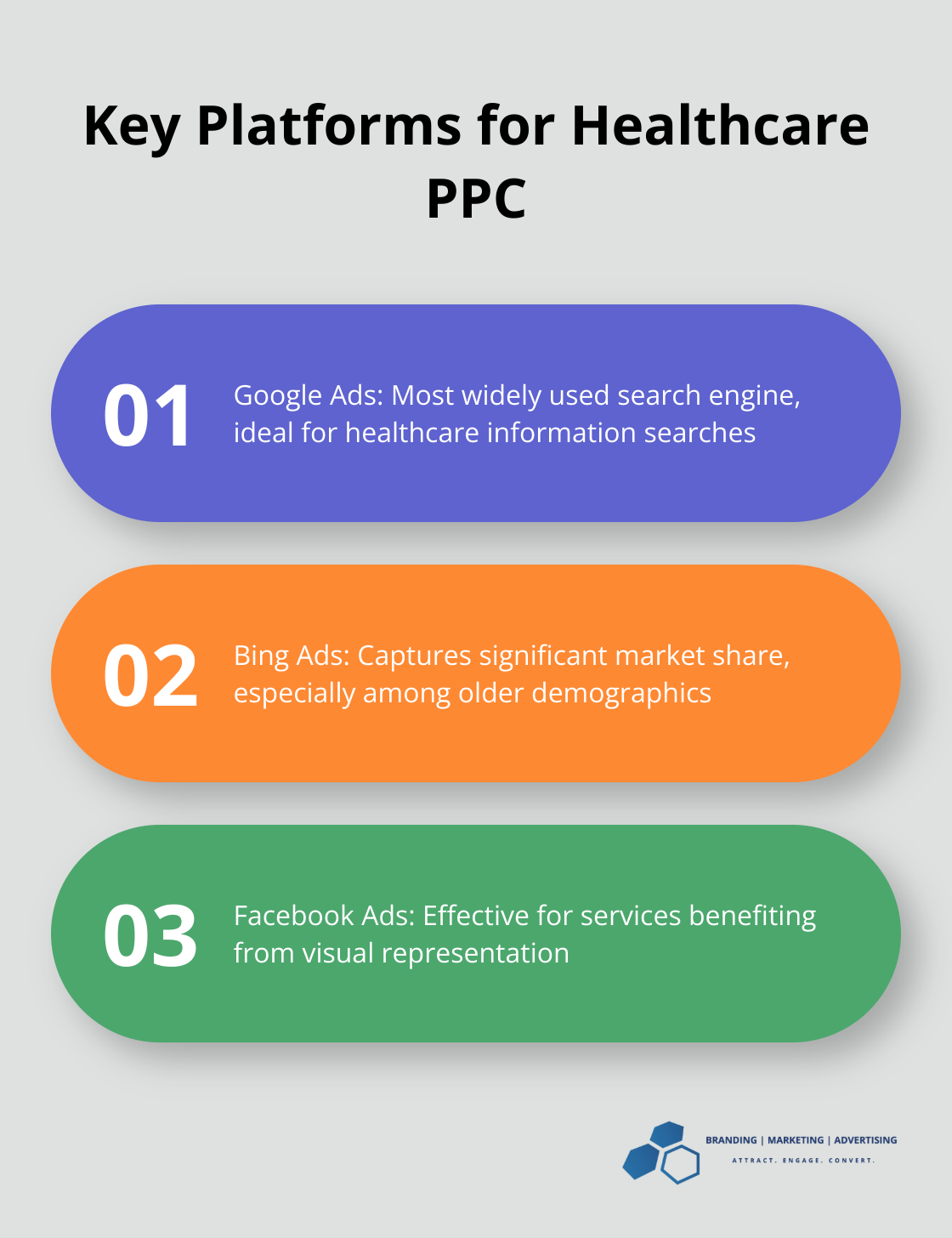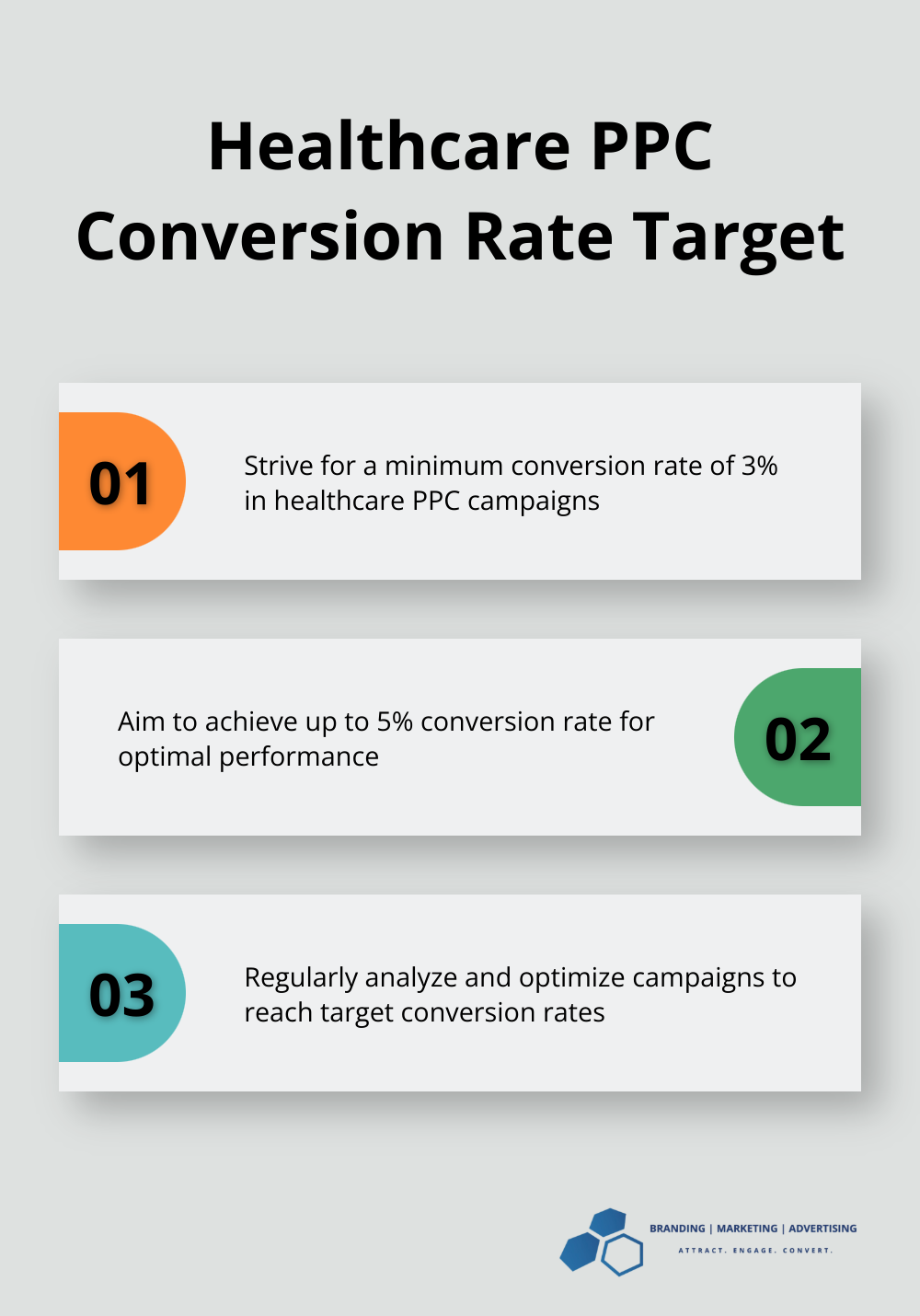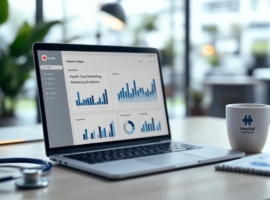Maximizing ROI with Pay-Per-Click Advertising in Healthcare
At Branding | Marketing | Advertising, we’ve seen healthcare providers struggle to reach their target audience effectively. Pay-per-click advertising offers a powerful solution to this challenge.
Healthcare PPC campaigns can significantly boost visibility and patient acquisition when executed correctly. This blog post will guide you through maximizing your return on investment in the competitive healthcare advertising landscape.
What is PPC Advertising in Healthcare?
Pay-Per-Click (PPC) advertising revolutionizes how healthcare providers connect with potential patients online. This digital advertising model requires advertisers to pay a fee each time their ad receives a click. It’s a direct way to purchase visits to your site, as opposed to earning those visits organically.
The healthcare industry has embraced PPC due to its effectiveness. A study reveals that 77% of people rely on search engines before booking an appointment with a healthcare provider, highlighting PPC’s vital role in linking healthcare providers with individuals actively seeking medical services.

The Advantages of PPC in Healthcare
PPC offers several benefits for healthcare providers:
- Instant Visibility: When someone searches for “urgent care near me” or “best orthopedic surgeon,” your ad can appear at the top of the search results, providing immediate exposure to potential patients.
- Precise Targeting: You can tailor your ads to specific demographics, locations, and times of day. This level of targeting proves particularly valuable in healthcare, where services often depend on location and patient needs can be highly specialized.
- Measurability and Flexibility: You can track the exact number of clicks your ads receive and how many of those clicks convert into appointments. This data allows you to adjust your strategy in real-time, optimizing your marketing budget and improving your return on investment.
Key Platforms for Healthcare PPC
Three platforms stand out as particularly effective for healthcare providers:

- Google Ads: As the most widely used search engine, Google often serves as the first stop for patients seeking healthcare information. Google Ads allows you to position your services front and center when potential patients search for relevant terms.
- Bing Ads: While less popular than Google, Bing captures a significant portion of the search market, particularly among older demographics who may require more healthcare services.
- Facebook Ads: Social media advertising can prove highly effective for healthcare providers, especially for services that benefit from visual representation (such as cosmetic procedures or physical therapy).
Maximizing Your PPC Effectiveness
To optimize your PPC campaigns, focus on relevance and quality. Google’s Quality Score, for instance, rewards ads that align closely with the user’s search query. A higher Quality Score results in a lower cost-per-click and better ad position.
Creating landing pages that match your ad content closely also proves important. If your ad promises information about a specific treatment, your landing page should deliver on that promise immediately. This consistency enhances user experience and increases the likelihood of conversion.
Healthcare providers can achieve remarkable results with well-executed PPC campaigns. For example, a local dental practice saw a 150% increase in new patient appointments within three months of launching a targeted Google Ads campaign.
PPC advertising in healthcare goes beyond getting clicks – it’s about connecting patients with the care they need. Understanding PPC basics, leveraging the right platforms, and focusing on relevance and quality can significantly enhance a healthcare provider’s online presence and patient acquisition efforts.
As we move forward, let’s explore the strategies that make healthcare PPC campaigns truly effective. From keyword research to ad copy creation, the next section will provide you with actionable insights to elevate your PPC performance.
How to Create Winning Healthcare PPC Campaigns
Healthcare PPC campaigns require a strategic approach to deliver optimal results. Let’s explore the key elements that contribute to successful PPC campaigns in the medical field.
Master Keyword Research for Healthcare
Effective keyword research forms the foundation of any successful PPC campaign. In healthcare, this means understanding the language patients use when searching for medical services. Tools like Google Keyword Planner and SEMrush help identify high-volume, relevant keywords.
Focus on long-tail keywords that indicate high intent. For example, “emergency dentist open now” will likely convert better than “dentist.”
Include location-based keywords in your strategy. Many patients search for healthcare providers near them.
Craft Compelling Ad Copy for Medical Services
Your ad copy must stand out in a crowded field. Focus on what makes your healthcare service unique. Are you open 24/7? Do you offer cutting-edge treatments? Highlight these differentiators in your ads.
Use strong calls-to-action (CTAs) that create a sense of urgency. “Book Your Appointment Today” or “Get Expert Care Now” can be effective.
Always ensure your ad copy complies with healthcare advertising regulations. Avoid making promises about outcomes or using patient testimonials without proper consent.
Optimize Landing Pages for Healthcare Providers
Your landing page is where conversions happen. It should directly address the search intent that brought the user to your ad. If your ad promotes a specific treatment, your landing page should provide detailed information about that treatment.
Include clear CTAs on your landing page. Make it easy for potential patients to book appointments or contact your office.
Ensure your landing pages are mobile-friendly.
Leverage Ad Extensions for Enhanced Visibility
Ad extensions can significantly improve the performance of your PPC ads. They provide additional information and increase the real estate your ad occupies on the search results page.
For healthcare providers, location extensions are particularly valuable. They show your address and a map marker, making it easy for potential patients to find you. Call extensions allow users to call your office directly from the ad (which can be crucial for urgent care services).
Sitelink extensions let you showcase specific services or departments. For example, a hospital could have sitelinks for “Emergency Room,” “Maternity Ward,” and “Outpatient Services.”
The implementation of these strategies can help healthcare providers create PPC campaigns that not only attract clicks but also convert those clicks into patients. The key to success lies in continuous optimization. Regular review of your campaigns, testing different approaches, and refining your strategy based on data will lead to improved performance over time.
In the next section, we’ll explore how to measure and analyze the performance of your healthcare PPC campaigns, providing you with the tools to make data-driven decisions and maximize your return on investment.
How to Measure PPC Success in Healthcare
Key Performance Indicators for Healthcare PPC
Click-Through Rate (CTR) indicates how compelling your ads are to potential patients. In healthcare, the average cost per click for hospitals and clinics is about 99 cents, while opticians see just over $1 average cost per click.
Conversion Rate measures the percentage of clicks that result in desired actions (such as appointment bookings or form submissions). Try to achieve a conversion rate of 3% to 5% for healthcare PPC campaigns.

Cost Per Acquisition (CPA) tracks how much you spend to acquire a new patient through your PPC efforts. This metric varies widely depending on the healthcare service, but your CPA should be lower than the lifetime value of a patient.
Quality Score, specific to Google Ads, affects both ad placement and cost. A higher Quality Score can lead to better ad positions at lower costs. Create relevant, high-quality ads and landing pages to improve this metric.
Tools for Tracking and Analysis
Google Analytics tracks website traffic and user behavior from your PPC campaigns. It provides valuable insights into how users interact with your site after clicking on an ad.
Google Ads and Bing Ads platforms offer built-in analytics tools that provide detailed information about ad performance, including impressions, clicks, and conversions.
Call tracking software is particularly valuable for healthcare providers, as many patients prefer to book appointments by phone. These tools can help you attribute phone calls to specific PPC campaigns.
Interpreting Data for Campaign Improvement
Review your campaign data regularly to identify trends and opportunities for improvement. Look for keywords that drive high-quality traffic and conversions, and consider allocating more budget to these areas.
Analyze your ad copy performance to understand which messages resonate best with your target audience. You might find that ads highlighting same-day appointments outperform those focusing on your years of experience.
Examine your geographic performance data. You may discover that certain locations yield better results, allowing you to adjust your targeting strategy accordingly.
A/B Testing for Healthcare Ads
A/B testing optimizes your PPC campaigns. Test different ad copies, landing pages, and calls-to-action to see which versions perform best.
When testing ad copy, try variations that emphasize different aspects of your healthcare services. One ad might focus on your state-of-the-art equipment, while another highlights your experienced staff.
For landing pages, test elements such as page layout, form length, and the placement of trust signals (like certifications or patient testimonials). Small changes can often lead to significant improvements in conversion rates.
Test one element at a time and run tests for a sufficient duration to gather statistically significant data. In healthcare PPC, where conversion volumes may be lower than in other industries, this might mean running tests for several weeks or even months.
To further improve your online presence and attract more patients, consider implementing healthcare SEO strategies alongside your PPC efforts.
Final Thoughts
Pay-per-click advertising has become an essential tool for healthcare providers to enhance their online presence and attract new patients. PPC campaigns offer immediate visibility, precise targeting, and measurable results, making them a powerful addition to any healthcare marketing strategy. Healthcare PPC allows organizations to connect with potential patients at crucial moments in their healthcare journey through platforms like Google Ads, Bing Ads, and Facebook Ads.
To maximize ROI in healthcare PPC, providers must focus on thorough keyword research, create compelling ad copy, and optimize landing pages. Utilizing ad extensions, particularly location and call extensions, can enhance visibility and make it easier for patients to connect with healthcare services. Measuring and analyzing PPC performance (including click-through rates, conversion rates, and cost per acquisition) is critical for ongoing success.
At Branding | Marketing | Advertising, we understand the unique challenges and opportunities in healthcare PPC. Our team of experts can help you navigate the complexities of digital advertising in the healthcare sector. To learn more about how we can enhance your healthcare PPC efforts, visit our website and discover our comprehensive digital marketing solutions tailored for healthcare providers.












